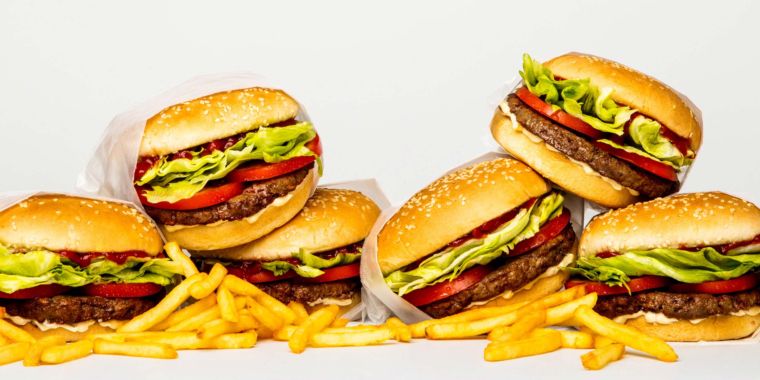Indeed, when independent researchers at Johns Hopkins University decided to get the best estimates they could by combing through the published literature, they found that in the 11 life cycle analyses they turned up, the average greenhouse gas footprint from plant-based meats was just 7 percent of beef for an equivalent amount of protein. The plant-based products were also more climate-friendly than pork or chicken — although less strikingly so, with greenhouse gas emissions just 57 percent and 37 percent, respectively, of those for the actual meats.
Similarly, the Hopkins team found that producing plant-based meats used less water: 23 percent that of beef, 11 percent that of pork, and 24 percent that of chicken for the same amount of protein. There were big savings, too, for land, with the plant-based products using 2 percent that of beef, 18 percent that of pork, and 23 percent that of chicken for a given amount of protein. The saving of land is important because, if plant-based meats end up claiming a significant market share, the surplus land could be allowed to revert to forest or other natural vegetation; these store carbon dioxide from the atmosphere and contribute to biodiversity conservation. Other studies show that plant-based milks offer similar environmental benefits over cow’s milk.
…
Soy milk, for example, requires just 7 percent as much land and 4 percent as much water as real milk, while emitting only 31 percent as much greenhouse gas. Oat milk needs 8 percent of the land and 8 percent of the water, while releasing just 29 percent as much greenhouse gas. Even almond milk often regarded as a poor choice because almond orchards guzzle so much fresh water—uses just 59 percent as much water as real milk.
But not all plant-based milks deliver the same nutrient punch. While soy milk provides almost the same amount of protein as cow’s milk, almond milk provides only about 20 percent as much—an important consideration for some. On a per-unit-protein basis, therefore, almond milk actually generates more greenhouse gas and uses more water than cow’s milk.



Removed by mod
https://www.ncbi.nlm.nih.gov/pmc/articles/PMC6039332/
In the US, cows do generally come from smaller farms’ cow-calf operations. They are either sold directly to feedlots after weaning or moved to backgrounding operations or ranches until they’re a year old, after which they’re sold to feedlots. 77% of beeves raised to market weight are done in feedlots with more than 1000 head which is the common definition of a CAFO for cattle. So even though they come from smaller farms, they mostly go through feedlots before consumption, and feedlots are dominated by CAFOs which have the most adverse effects. I wasn’t able to find data on what portion of cows aren’t raised to market weight in a feedlot (i.e. totally grass fed from birth to slaughter), and I additionally admit that I was oversimplifying the beef lifecycle. I also don’t see how this means that we need to increase cattle production. Surely the biggest gain to be made here is to move cattle and bison production to a fully regenerative framework where they stomp a reasonable amount of manure into the ground for their whole lives, but my intuition tells me that that will result in somewhat less beef being raised because such operations require more land than the status quo. I don’t have hard data to back that up though.
Removed by mod